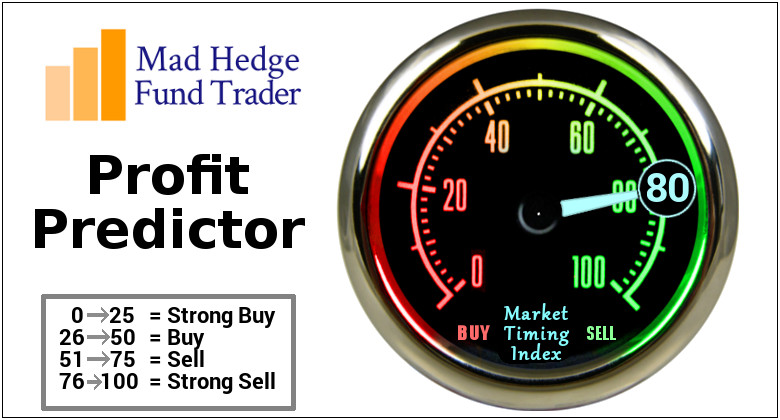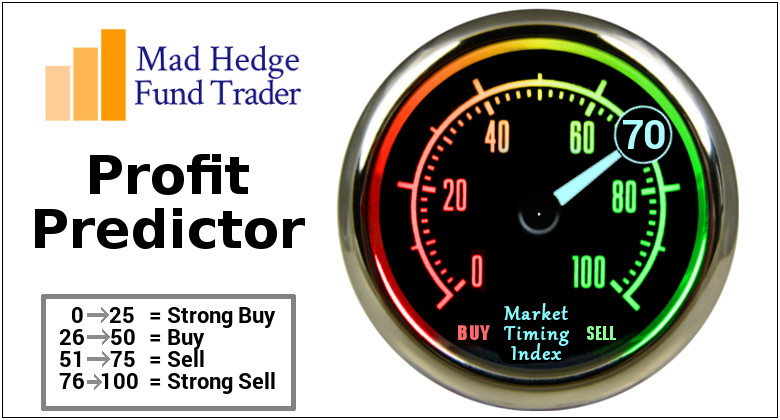Global Market Comments
November 3, 2021
Fiat Lux
Featured Trade:
(TESTIMONIAL),
(DECODING THE GREENBACK),
(WHAT ABOUT ASSET ALLOCATION?)

Global Market Comments
November 3, 2021
Fiat Lux
Featured Trade:
(TESTIMONIAL),
(DECODING THE GREENBACK),
(WHAT ABOUT ASSET ALLOCATION?)

I watched John Thomas for a year before jumping in, and I should have done it earlier when he phenomenally traded that awful year, 2011, that whipsawed so many investors including myself.
He again outperformed the market in 2012, 2013, 2014, 2015 and so far he has shown amazing skill once more in navigating treacherous markets with deep-in-the-money call and put spreads.
You can not exactly replicate his numbers 100% of the time for many different reasons, some of them strictly technical in nature.
But you will get most of them, or you can use his trade alerts just directionally to help you determine where you should put your money and how to allocate your dollars risk-on vs. risk-off.
I am up 20% trading with John since October 2015. I also like John's in-depth charts, market insights, and his educational webinars, that have become the cornerstone of my market evaluations.
One should never put all eggs in the same basket, but subscribing to the Mad Hedge Fund Trader is a smart way to enhance the performance of your stock portfolio.
Christian
Austin, Texas

Asset allocation is the one question that I get every day, which I absolutely cannot answer.
The reason is simple: no two investors are alike. The answer varies whether you are young or old, have $1,000 in the bank or $1 billion, are a sophisticated investor or an average Joe, in the top or the bottom tax bracket, and so on.
This is something you should ask your financial advisor if you haven’t fired him already, which you probably should.
Having said all that, there is one old hard and fast rule, which you should probably dump. It used to be prudent to own your age in bonds. So if you were 70, you should have had 70% of your assets in fixed income instruments and 30% in equities.
Given the extreme overvaluation of all bonds today, and that we have probably just entered a 30-year bear market, I would completely ignore this rule and own no bonds.
Instead, you should substitute high dividend-paying stocks for bonds. You can get 4% a year or more in yields these days, and get a great inflation hedge, to boot. You will also own what everyone else in the world is trying to buy right now, high-yield US stocks.
Mad Hedge Biotech and Healthcare Letter
November 2, 2021
Fiat Lux
Featured Trade:
(IS THIS THE BEST BUY AMONG THE VACCINE STOCKS)
(NVAX), (MRNA), (PFE), (BNTX), (SNY), (JNJ)
Many investors have amassed a fortune since the pandemic started in the early months of 2020 by betting on COVID-19 vaccine candidates. Moderna (MRNA), for example, has skyrocketed to over 1,500% since last year.
However, there was an even bigger winner: Novavax (NVAX).
Novavax shares actually rose by a jaw-dropping 4,000% since the COVID-19 pandemic began, with the company’s wild rollercoaster ride still not reaching its end anytime soon.
In fact, Novavax has been quite volatile in 2021, rising by more than 180% in early February only to have most of those gains practically wiped out a mere three months after.
Then, the stock managed to show off a strong rebound over the following months. Since early September, though, Novavax’s share price has fallen by over 35%.
While these can be discouraging for some investors, I think that the befuddling gyrations that had us reeling in the past months tell a different story: We might have just discovered the biggest bargain among the leading COVID-19 vaccine stocks in the market today.
There are two possible reasons for the Novavax selloff recently.
The first is the company’s delayed filing of its own COVID-19 vaccine candidate, NVX-CoV2373. This is particularly frustrating considering that Novavax has failed to meet its deadlines multiple times now.
Nonetheless, I prefer to look at these delays as mere speed bumps than actual roadblocks that hinder the company from achieving its goal.
After all, the issue is not on the vaccine’s safety and efficacy—the results have been proven to be highly compelling—but on manufacturing concerns, which can eventually be resolved.
The second reason is the recent update from Merck (MRK) and its partner, Ridgeback Biotherapeutics, on their COVID-19 pill. Of the two, I find this reason to be an overreaction by the market.
None of the vaccine developers should ever be negatively affected by Merck’s oral treatment. While some people might choose not to get the vaccine if and when the pills become available, practically all governments worldwide are still committed to vaccinating their citizens.
Moreover, the COVID-19 vaccines will probably be necessary every year.
When Novavax gets the required authorizations, the company is set to generate a boatload of cash. The biotechnology company is anticipating to supply up to 200 million doses in the European Union alone.
The entire COVID-10 vaccine market is projected to be worth $115 billion by the end of 2021. Moderna is estimated to deliver up to 3 billion doses, while Novavax is expected to produce up to 2 billion doses by 2022.
The rest of the anticipated 14 billion doses will be divided among the other vaccine makers.
Among them, though, Novavax is expected to be the stand-out.
For one, its vaccine candidate appears to be the most robust and affordable at $16 per dose compared to Moderna’s $25.50 and Pfizer-BioNTech’s $22.80.
The growing number of reports on the side effects of mRNA vaccines, which are said to be of a higher rate than Johnson & Johnson’s (JNJ) candidate, can also be a turnoff for many people.
Since Novavax uses a more traditional and familiar vaccine technology—the same one used for the flu, HPV, and Hepatitis B—it causes lower side effects rates.
More importantly, these are mild symptoms like muscle pain and fatigue compared to the heart inflammation concerns raised among those jabbed with Moderna or Pfizer vaccines.
While the side effects from the other two occur in relatively small populations, Novavax is anticipated to be perceived as the more reassuring option, especially for people who are still uneasy with the new technology of mRNA vaccines.
More importantly, Novavax can offer a solution to the global problem of vaccine hesitancy for COVID-19.
To offer a context on how important this is, 48% of Russians and 27% of Americans refuse to take the vaccines.
As of September, only 181.2 million individuals in the US, or 55.1% of the country’s population, have agreed to be fully vaccinated. Needless to say, overcoming this hesitancy would be a massive relief for everyone.
Apart from its COVID-19 vaccine, Novavax has also been working on an influenza vaccine candidate, NanoFlu.
Recently, results from the NanoFlu clinical trials showed that it’s way more effective than the leading brand today, Sanofi’s (SNY) Fluzone Quadrivalent.
If NanoFlu gains approval, this will be another huge growth driver for Novavax.
To put it in perspective, Sanofi’s Fluzone generated $2.9 billion in sales in 2020—a market that Novavax can also tap into and might even dominate.
Meanwhile, the flu vaccine market in the US alone continues to expand.
From 2020 to 2021, the number of flu vaccines administered rose by 11% year over year to reach 193.8 million doses. That’s roughly 59% of the US population—a country that’s only 7th place in terms of the global rates of flu vaccination.
That signifies a colossal market opportunity worldwide for Novavax to capitalize.
At this point, Novavax has yet to secure any approval or official authorization for NVX-CoV2373 or NanoFlu—and that’s the best reason to add this stock to your portfolio.
Investors are given a chance to seize shares of the stock while it’s still in the stage where its most lucrative catalysts are just lurking around the corner.
Mad Hedge Bitcoin Letter
November 2, 2021
Fiat Lux
Featured Trade:
(ISSUANCE CONSTRAINTS ELEVATE ETHER)
(BTC), (ETH)

We are at the point where sure Bitcoin will go higher and I fully expect it to be close to $100,000 next year, but Ether will outgain Bitcoin by percentage points.
And it’s no shocker that Ethereum (ETH) has already climbed above $4,000 for the 3rd time this year.
Talk about a 2-foot putt.
In the last five months, the supply of ETH has shrunk meaningfully from 22 million tokens to 18 million today.
Dwindling supply intersected with higher demand means higher prices no matter what asset you’re talking about.
The tape shows that retail and institutional money piling into ETH in the last few months means fewer sellers looking for short-term smash and grab type of profits.
I do believe this is a legitimate reason why we are seeing the volatility of crypto settling down the last month as nobody is willing to take profits when they know more profits are on the table for next year.
In total, the Ethereum network has seen its first consecutive week of negative supply issuance as frothy markets drive persistently high transaction fees.
The London upgrade introduced a burn mechanism into Ethereum’s fee market in early August, meaning a small quantity of Ether (ETH) has since been destroyed with every transaction executed on the network.
The Ethereum London Hard Fork upgrade is a set of five improvement proposals.
Unlike Bitcoin, there is no limit to mining Ether coins, which makes it an inflationary cryptocurrency which is why development understood installing a deflationary mechanism would do wonders for the price of ETH.
Miners are paid new coins for validating each block of information. They are compensated with transaction fees that are paid by users.
One of the biggest benefits of the London upgrade is that it has enabled the Ethereum network to handle a higher transaction load per second. It will help with scalability and tackle the high transaction fees — one of the biggest complaints of small investors or those who make frequent transactions.
Since the London upgrade, more than 724,400 ETH worth $3.1 billion has been permanently destroyed.
Truth be told, ETH has not experienced lower transaction fees, or gas price.
Yet, the upgrade has not increased gas prices but has made them more predictable and stable.
This has led to a smoother network overall during peak hours.
Transaction volumes are 400% higher since the same period last year and Ethereum needs to handle the higher workload to legitimize itself into a solid cryptocurrency.
The inability to function properly as a network could cause a massive sell-off that would spill into more mature Bitcoin.
ETH simply won’t be attractive relative to other crypto if they can’t put a lid on transaction costs.
The reason equities are so attractive is not only because they are fully insured by the federal government, but because liquidity and costs are minimal.
Thwarting this underlying issue of a bloated supply, six times larger than Bitcoin's, should act as a major catalyst in awakening the price action of ETH and that’s what we are currently seeing.
In total, there's been a 57% reduction in cumulative ETH issuance to date and it’s hard for me to envision a scenario in which ETH is not over $8,000 per unit next year.
Generally speaking, after the transition to proof of stake, the supply of ETH will decline 2% annually.
The scarcity value that will hit next year will easily cause the asset to double quickly.
I predict a rapid run-up in ETH prices leading up to the December debt ceiling triggering new all-time highs in BTC and ETH.
Jump on the bandwagon while it’s still rolling!
“Whereas most technologies tend to automate workers on the periphery doing menial tasks, blockchains automate away the center. Instead of putting the taxi driver out of a job, blockchain puts Uber out of a job and lets the taxi drivers work with the customer directly.” – Said Co-Founder of Ethereum Vitalik Buterin
When John identifies a strategic exit point, he will send you an alert with specific trade information as to what security to sell, when to sell it, and at what price. Most often, it will be to TAKE PROFITS, but, on rare occasions, it will be to exercise a STOP LOSS at a predetermined price to adhere to strict risk management discipline. Read more
When John identifies a strategic exit point, he will send you an alert with specific trade information as to what security to sell, when to sell it, and at what price. Most often, it will be to TAKE PROFITS, but, on rare occasions, it will be to exercise a STOP LOSS at a predetermined price to adhere to strict risk management discipline. Read more
Legal Disclaimer
There is a very high degree of risk involved in trading. Past results are not indicative of future returns. MadHedgeFundTrader.com and all individuals affiliated with this site assume no responsibilities for your trading and investment results. The indicators, strategies, columns, articles and all other features are for educational purposes only and should not be construed as investment advice. Information for futures trading observations are obtained from sources believed to be reliable, but we do not warrant its completeness or accuracy, or warrant any results from the use of the information. Your use of the trading observations is entirely at your own risk and it is your sole responsibility to evaluate the accuracy, completeness and usefulness of the information. You must assess the risk of any trade with your broker and make your own independent decisions regarding any securities mentioned herein. Affiliates of MadHedgeFundTrader.com may have a position or effect transactions in the securities described herein (or options thereon) and/or otherwise employ trading strategies that may be consistent or inconsistent with the provided strategies.
